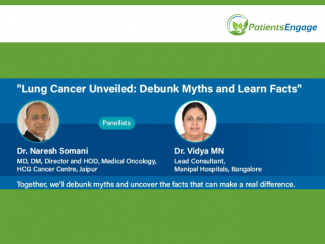
TB is a contagious and potentially life-threatening disease. If you observe your employee has prolonged coughing with no relief for more than two weeks, please get him/her checked out by a doctor immediately. Dr Shital Patel informs how to recognize and evaluate hazards of Tuberculosis.
What is TB? How can it spread?
Tuberculosis or TB is an infectious disease caused by Mycobacterium tuberculosis bacteria. It is airborne which means it can spread by tiny droplets in the air when an infected person sneezes, coughs, spits, laughs or even spits while talking.
Note: TB does not spread by shaking hands, sitting next to, sharing dishes/utensils or sitting on the same toilet seat.
Why is timely diagnosis important?
If left untreated, an infected person can spread the bacteria to an average of 10-15 persons a year.
Hence early diagnosis is important. If there is a persistent cough for more than 2 weeks, a check-up by the local doctor can identify infection promptly. This greatly reduces treatment delays, and risk of transmission to family members, colleagues and the community. It also ensures better prognosis and lesser mortality rates!
What is the difference between TB infection and TB disease?
Well, when a healthy person is first exposed to the TB bacteria, the immune system is able to make antibodies and keep the bacteria in check so that the bacteria do not replicate. This is termed as latent TB infection. Such persons show no symptoms of TB but may have a positive reaction to the Tuberculin skin test. TB disease may occur when the TB bacteria is able to replicate under favorable conditions in the body and cause inflammation. Such conditions are due to a weak immune system as seen in HIV infections, malnutrition, cancer therapy, silicosis or in certain chronic conditions like alcoholism, diabetes, prolonged steroid use, extreme physical/emotional stress etc.
How can TB be detected at a workplace?
The most common symptom is a persistent cough lasting for more than 2 weeks. This may or may not be accompanied by chest pain, weight loss, coughing of blood, night sweats, fever, fatigue and shortness of breath. TB can be easily identified through screening, chest X-ray and sputum analysis. If you observe your employee has prolonged coughing with no relief even after few weeks, it would be advisable to get him/her checked out by a doctor immediately. If the employee is positive for infections, all persons that he has been in contact with for the past few weeks should also get tested.
In certain workplaces, annual screening for TB is now mandatory. Such screening also helps identify active TB cases with minimal or no symptoms at all. For help staff employed at home, it is imperative to look out for TB symptoms and ask about TB history so that remedial action can be taken and your family members - especially the old and very young are protected.
How can you support treatment for your employees?
The TB bacteria are known to die slowly. Usually 6 months of treatment is required to kill all the bacteria. After the first few weeks, most patients begin to feel better and discontinue medicines. This can be very dangerous because the bacteria continue to replicate and can also develop resistance to the medicines. The patient may now have drug-resistant TB, which will require new medicines for a longer time period.
Hence, adherence to the treatment protocol is crucial!
In case of MDR-TB (multi-drug resistant TB), patients usually stop being infectious a few weeks after treatment has started. THE MDR_TB treatment regime normally lasts for 24 months. Your doctor will inform you when MDR-TB patients are ready to resume work.
One way to increase compliance to treatment is via Directly Observed Treatment or DOT, where a health care worker ensures timely medicine intake with supervised swallowing and emotional counseling for the patient. The DOT worker also checks if the medicines are working and reports side-effects. As an employer, you can monitor the course of treatment, keep in touch with the DOT worker and reassure your employee about job security (for leaves for initial treatment and doctor follow-ups). Emotional support and care can be very encouraging for patients at such a time.
When can an employee resume work?
Patients are advised to stay home and rest for the first few weeks, till symptoms subside and the medicines have started to work. Usually TB patients are no longer infectious after the initial 2-3 weeks of treatment. At this time, if the patient is feeling better to resume work, they can do so after getting the doctor’s approval. They are no longer infectious and safe to work around. Many patients are provided with nose and mouth mask that can be worn at all times if they continue to have any cough.
For patients who have drug-resistant TB, a longer leave and hospitalization may be required. Such patients can resume work only after a clean sputum culture report from their doctor.
Educating the employee, his colleagues and family members about how TB transmission, importance of treatment and compliance can be very helpful.






